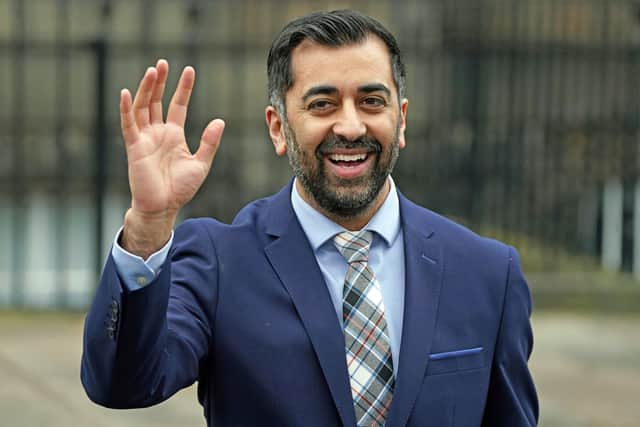Scottish independence: What happens now under Humza Yousaf? – Ian Swanson
and live on Freeview channel 276
As soon as he became First Minister last week, Humza Yousaf said he would be asking Westminster for a Section 30 order to allow another referendum on independence. Then he announced his ministerial team, which included a new post of minister for independence. Cue the predictable condemnation, led by the Tories, accusing the SNP of putting the constitution ahead of the pressing issues concerning the public and using taxpayers’ money to fund a “nationalist campaigner”.
But Mr Yousaf's early action on independence implies an urgency which no longer seems to fit with the SNP's plans. Nicola Sturgeon may have been intending to turn the next general election, expected next year, into a de facto referendum, but that plan has been ditched. None of the three leadership contenders wanted to take up the Sturgeon strategy – not just because it could be tricky to persuade the electorate and the other parties to view the election in that way, but because gaining an overall majority of votes would be a major challenge and failure to do so would allow the opposition to claim the SNP had had its second referendum and lost again.
Advertisement
Hide AdAdvertisement
Hide AdInstead, Mr Yousaf and his main leadership rival Kate Forbes both acknowledged that current polling did not show strong enough support for the party’s key policy and they needed to build a "sustained majority" for independence before staging a fresh vote on it. They accepted it would take time to create that. And they both emphasised the need to govern well to show voters the party could make a success of existing powers and convince them still more could be achieved with full powers.


Even Ash Regan, who wanted to forget about another referendum and treat every general election as an opportunity to win a mandate to start independence negotiations, seemed to accept it might take time. "The people of Scotland will tell us when they're ready for independence," she told the hustings.
For most of Ms Sturgeon's eight years in office, she was said to be under pressure from impatient activists who could not wait for another referendum. So what of these restive nationalists now? Have they accepted they might need to bide their time a bit longer? Obviously, no independence supporter wants another defeat because they know that would likely put off any serious chance of achieving their goal for decades. But neither do they want inaction.
One insider suggests that, with hopes of another referendum having been repeatedly disappointed since 2014 and little having happened in the way of campaigning to win over doubters, what activists want now is to see an effort not just to build the case for independence and increase support, but also establish a momentum for constitutional change – a twin-track approach of party campaigning and government activity, which could boost the prospects of achieving their ambition.
Advertisement
Hide AdAdvertisement
Hide AdMr Yousaf’s call for a Section 30 order to allow a referendum – even though he knows he won’t get it – and his decision to appoint Jamie Hepburn as minister for independence fit with such a strategy. But, as the new First Minister himself has admitted, with support for independence bobbing around the 50 per cent mark, the SNP has a lot of persuading to do.
Comment Guidelines
National World encourages reader discussion on our stories. User feedback, insights and back-and-forth exchanges add a rich layer of context to reporting. Please review our Community Guidelines before commenting.